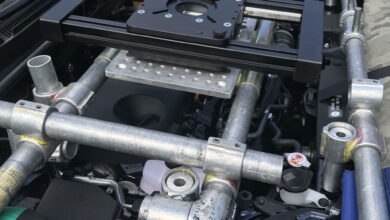Kongo Tech: Exploring the Technological Innovations of the Kingdom of Kongo

The Kingdom of Kongo tech , a pre-colonial African kingdom located in west-central Africa, thrived from the 14th to the 19th century. Known for its rich culture, advanced political organization, and extensive trade networks, the kingdom was also notable for its technological innovations. This article delves into the various technological advancements and contributions of the Kingdom of Kongo, highlighting its achievements in metallurgy, agriculture, textiles, and architecture.
Metallurgy: The Backbone of Kongo Technology
Ironworking
Ironworking was a cornerstone of Kongo tech technology, with iron being essential for tools, weapons, and construction. The kingdom had a sophisticated iron-smelting industry, utilizing locally sourced iron ore and charcoal made from hardwoods. Skilled blacksmiths produced a variety of iron goods, including farming tools, hunting weapons, and domestic utensils.
- Tools and Weapons: The production of high-quality tools and weapons, such as hoes, knives, and spears, significantly boosted agricultural productivity and military strength.
- Trade and Economy: Iron goods were highly valued in trade, both within the kingdom and with neighboring regions. The Kongo’s expertise in ironworking contributed to its economic prosperity.
Copper and Brass
In addition to iron, the Kingdom of Kongo tech was known for its copper and brass works. These metals were used to create ornamental objects, currency, and ceremonial items.
- Currency: Copper was used to produce nzimbu shells, which served as a form of currency. Brass, often imported through trade, was fashioned into various decorative and ceremonial items.
- Art and Culture: Copper and brass objects, such as bracelets, anklets, and statues, were integral to Kongo’s art and cultural expressions.
Agricultural Innovations
Agriculture was the primary economic activity in the Kingdom of Kongo, and the people developed various techniques to enhance productivity and sustainability.
Crop Cultivation
The kingdom’s fertile lands supported diverse crops, including cassava, yams, bananas, and palm oil. The Kongo tech people implemented advanced agricultural practices to maximize yield.
- Intercropping: Farmers practiced intercropping, growing multiple crops together to improve soil fertility and reduce pest infestations.
- Irrigation and Water Management: Efficient irrigation systems were developed to ensure a steady water supply for crops, particularly during dry seasons.
Animal Husbandry
Animal husbandry was another important aspect of Kongo’s agriculture. Livestock, such as cattle, goats, and chickens, provided meat, milk, and eggs, contributing to the kingdom’s food security.
- Selective Breeding: The Kongo tech people practiced selective breeding to enhance the quality and productivity of their livestock.
- Integrated Farming: Livestock farming was integrated with crop cultivation, using animal manure to fertilize fields and improve crop yields.
Textile Production
Textile production in the Kingdom of Kongo tech was a highly developed craft, involving the use of local materials and traditional techniques.
Raffia Cloth
Raffia, derived from the fibers of the raffia palm tree, was the primary material used for textile production. The Kongo tech people were renowned for their skill in weaving raffia cloth, which was used for clothing, mats, and ceremonial garments.
- Weaving Techniques: Intricate weaving techniques produced high-quality, durable raffia cloth. These techniques were often passed down through generations, preserving the craft’s tradition.
- Dyeing and Decoration: Natural dyes were used to color raffia cloth, and various decorative patterns were woven or embroidered into the fabric. These patterns often held cultural and symbolic significance.
Trade and Influence
Raffia cloth from the Kingdom of Kongo tech was highly valued in regional trade, with its quality and craftsmanship being widely recognized. The cloth was exchanged for goods such as beads, salt, and other commodities, furthering the kingdom’s economic reach.
Architectural Achievements
The Kingdom of Kongo tech demonstrated notable architectural skills, reflected in its buildings and urban planning.
Housing and Settlements
Traditional Kongo tech houses were typically constructed using locally available materials, such as wood, clay, and thatch. These structures were designed to be practical and suited to the local climate.
- Construction Techniques: Skilled artisans used techniques such as wattle and daub (interwoven sticks and clay) to create sturdy walls. Thatched roofs provided effective insulation against the heat.
- Urban Planning: Villages and towns were strategically planned, with communal areas, marketplaces, and pathways facilitating social and economic activities.

Religious and Ceremonial Structures
Religious and ceremonial structures in the Kingdom of Kongo tech were built to honor ancestral spirits and deities, reflecting the kingdom’s spiritual beliefs.
- Sacred Sites: Important sites, such as shrines and burial grounds, were often marked by carved stones, wooden statues, and other symbolic structures.
- Construction Materials: These structures used materials believed to hold spiritual significance, including specific types of wood and stone.
Technological Exchange and Influence
The Kingdom of Kongo’s technological innovations were not developed in isolation. The kingdom engaged in extensive trade and cultural exchanges with neighboring regions and distant lands, including Europe and Asia.
Trade Networks
Kongo’s strategic location facilitated trade with various regions, leading to the exchange of goods, ideas, and technologies.
- Trans-Saharan Trade: Trade routes across the Sahara connected the Kongo tech with North African and Middle Eastern markets, bringing in goods such as textiles, metalwork, and horses.
- Atlantic Trade: Interaction with Portuguese explorers and traders in the late 15th century introduced new technologies and goods to the kingdom, including firearms and European textiles.
Cultural Influence
The exchange of cultural and technological knowledge through trade and interaction with other civilizations enriched Kongo’s technological capabilities.
- Adoption and Adaptation: The Kongo tech people adopted and adapted foreign technologies, incorporating them into their existing practices. This process of integration and innovation contributed to the kingdom’s technological advancement.
- Artistic Exchange: Artistic styles and techniques from other cultures influenced Kongo’s art and craftsmanship, leading to a unique blend of local and foreign elements.
Conclusion
The Kingdom of Kongo tech was a beacon of technological innovation and cultural richness in pre-colonial Africa. Its advancements in metallurgy, agriculture, textiles, and architecture reflect a society that valued skill, creativity, and sustainability. The kingdom’s ability to engage in technological exchange and adapt foreign innovations further underscores its dynamic and progressive nature. By exploring the technological achievements of the Kingdom of Kongo, we gain a deeper appreciation for its contributions to African and global history.



